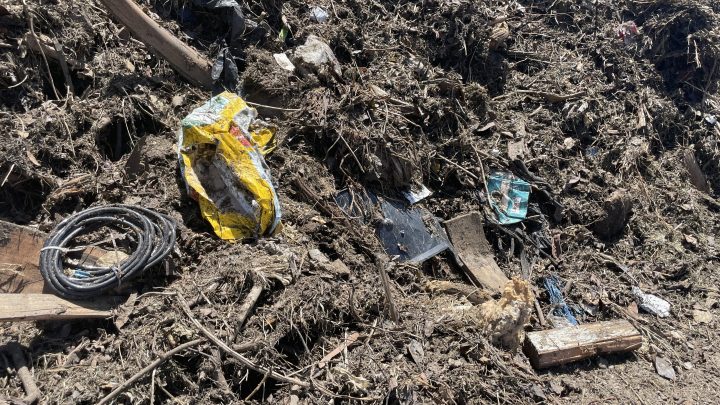
Municipal composting helps food scraps find a second life

On trash pickup day in Los Angeles, the orange peels, carrot tops, egg shells and brown paper bags are no longer carted off to the local landfill. Instead, they go to a compost facility called Recology, 100 miles north to Bakersfield.
Why? Because methane is one of the worst greenhouse gasses, and a big source of methane is organic waste. When food waste doesn’t have access to oxygen — when it’s in a landfill, for instance — it releases methane as it rots. But composting solves that problem. A number of states now have organic waste collection laws.
Los Angeles has spent more than $1.6 billion on compost contracts with Recology and other companies. While it may sound like a lot, the city spent more than double that on its most recent trash hauling contracts.
LA Sanitation Assistant Director Alex Helou said the biggest obstacle now is getting residents to actually use those green bins.
“We are generating about 1,800 tons a day,” he said. “In the City of Los Angeles, our goal right now is to increase the 1,800 tons a day to 3,000 tons a day.”
Starting next year, California will fine cities that don’t comply. The state wants to divert the organic waste heading to landfills by an ambitious 75% in the next two years.
When LA’s orange peels and egg shells arrive 100 miles north of the city at the Recology compost facility, they end up in a big pile along with chicken bones and tree branches and garden scraps. At first, the waste smells like rotting food. A worker in a construction helmet, a reflector vest and thick gloves wanders around it and plucks out the milk cartons and garden hoses that mistakenly ended up in green bins.
“Anything that’s bigger that he can physically see he’s going to pull out and move it out of the way,” said Recology General Manager Sharbel Eid.
Then, the pile moves on to its next stop: the shredder. Its job is to chop up bigger pieces of waste, like tree branches. The food waste pile then gets pushed into long rows of organic waste. Each row is 10 to 12 feet tall and can stretch as long as seven football fields.

Every few days the rows are turned and oxygenated so the waste can break down into compost.
“At about the 90-day mark is when we’ll pull it, we’ll bring it up to our screen plant and then we’ll start to screen it,” Eid said.
Anything larger than a quarter inch, like a forgotten produce sticker, gets sifted out. The end result is moist, almost-black, rich compost. The moldy smell is gone, and now it smells like wet dirt.

It’s then loaded into a commercial dump truck and heads to a farm down the road, where a tractor and spreader moves through an almond orchard, shooting compost over the base of the trees. Recology estimates more than 95% of its compost is used on local farms.
“Now, if you’re a farmer or gardener, holy cats, man that looks yummy to you,” said Recology’s PR Manager Robert Reed. He said there are huge benefits to this months-long process.
“Composting programs save landfill space. It reduces methane emissions. Compost improves soil health. That helps with growing more food which equals food security. And it helps save water.”

There’s a lot happening in the world. Through it all, Marketplace is here for you.
You rely on Marketplace to break down the world’s events and tell you how it affects you in a fact-based, approachable way. We rely on your financial support to keep making that possible.
Your donation today powers the independent journalism that you rely on. For just $5/month, you can help sustain Marketplace so we can keep reporting on the things that matter to you.

















